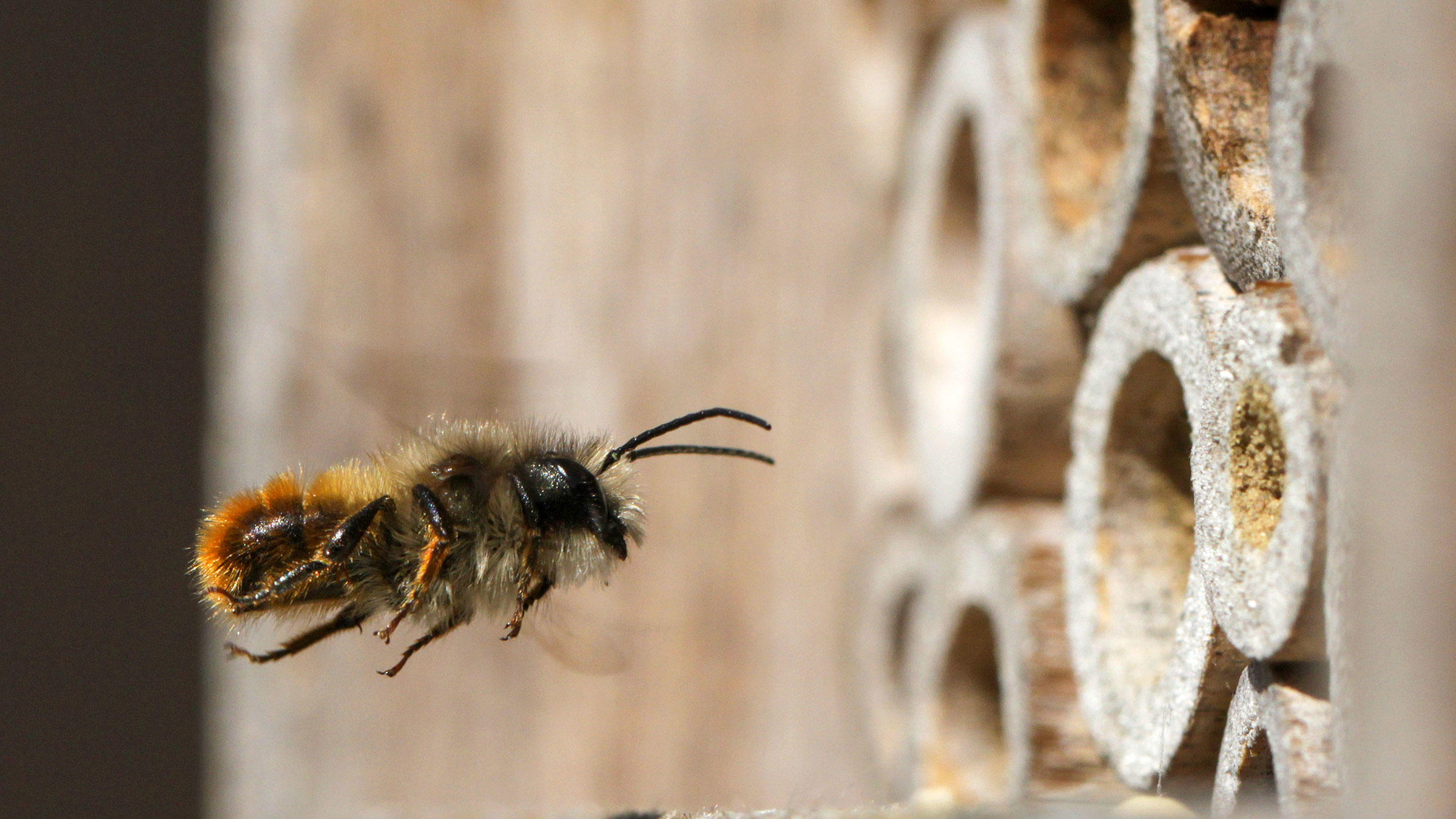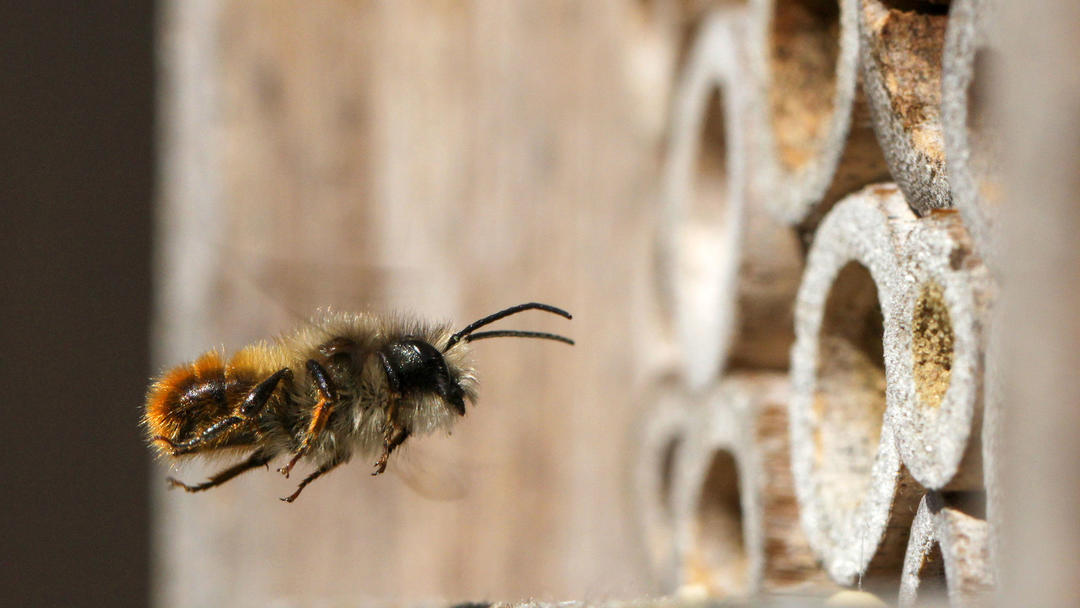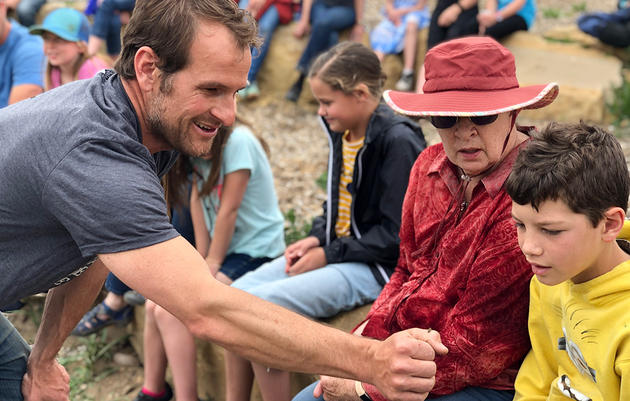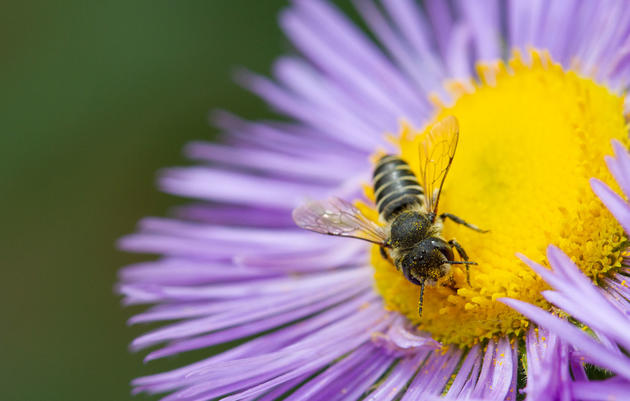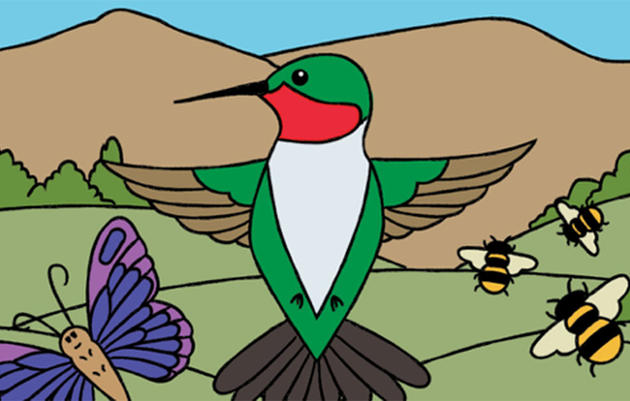As late spring ushers in warm days and early blooms, we find ourselves getting into sync with our gardens and the pollinators that make them more robust. At Audubon Rockies, we put a lot of energy into encouraging folks to take action for birds and plant native plants at their residence. Here’s an article focused on native bees to better acquaint you with the little-known heroes of our varied North American landscapes.
Native Bees vs. Honeybees
It’s important to know that the various subspecies of honeybee found on our landscapes here in America date back to 1622 with the arrival of fellow European migrants. Thus, they are not a native bee to this landscape. Like other bee species from other continents, they’ve become “naturalized” and contribute to the detailed task of pollinating various food crops, wild and domesticated. That is valuable.
However, when it comes to thinking about the ecological connectivity and function that support bird populations, it’s critical to recognize that native bees are much more acclimated to pollinating the native plants that thrive there. In fact, that is what they’re best at.
Sure, they don’t make honey, but when you take into account that one mason bee can pollinate twice as efficiently as a honeybee, it becomes alarming to think that we don’t fully acknowledge this critical environmental service. And yet the food supply for birds and humans rely heavily on it!
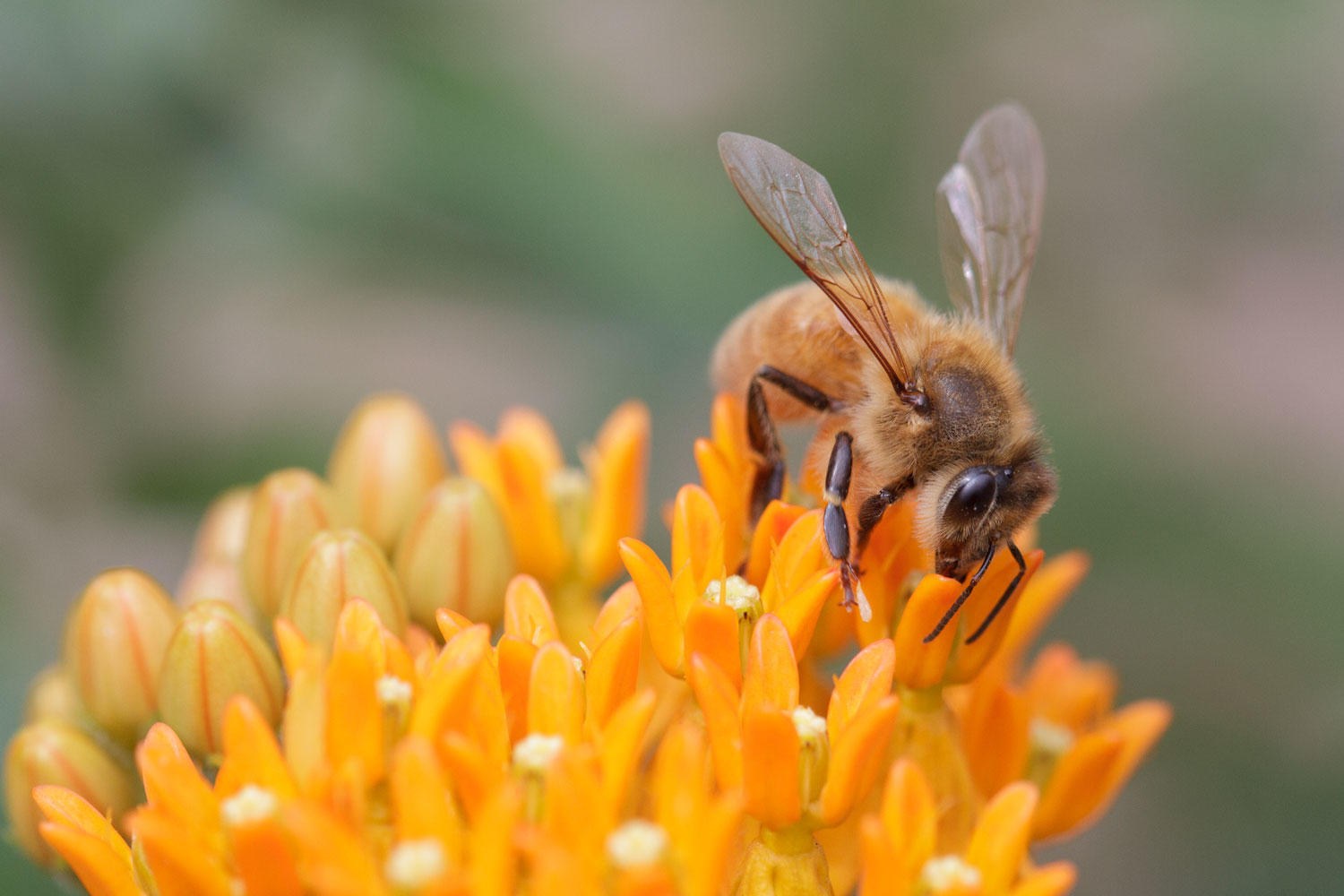
Here in Colorado we have more than 900 species of native bees. When thinking about pollinating, it’s important to understand that generalists are our best pollinators. Honeybees are known to be specialists. When they find a preferred forage source, they will continuously revisit that source to return nectar and pollen to the hive, even if it’s a good distance away (sometimes many miles). Like bumblebees, they work within the context of a social structure. There are different levels of responsibilities and duties to make that “society” function.
Many other bee species are considered solitary and are simply preoccupied with their need to mate, forage, and lay eggs. They typically feed to provide their eggs (soon-to-be larva) with early sustenance and to sustain themselves. Many of these solitary bee species are quite disorganized in how they feed and do so much closer (within 300 feet or so) to their nesting location. Because they feed in an erratic fashion, with no particular preference, they tend to “belly-flop” in and out of various flowers and species, accruing big amounts of pollen grains on their abdomen. This technique is extraordinarily effective at cross-pollinating plants.
Mason Bees
We’ve chosen to focus on a particular bee species for the purpose of this section. The orchard mason bee (Osmia lignaria) is divided into two subspecies, generally divided by which side of the Rocky Mountains you find it. These bees are incredible pollinators and are gaining traction for agricultural purposes, as they are especially effective at pollinating orchard fruit crops.
Mason bees earned their name from their proclivity to cap their nesting materials with silt or clay-derived mud, a common binder used in the masonry trade. Not only do they cap the ends of nesting cavities in the wild, but they also build “partitions” of mud to divide each egg with its respective food source (pollen). So, for example, if one were to investigate a single six-inch-long reed positioned in a man-made artificial pollinator structure, one would expect to find one egg and pollen mass per each inch, divided by small clay walls. Mason bees are tolerant of cooler nighttime temperatures found in the Rocky Mountains and are one of the more active bee species in early spring.
Males typically emerge first as temps climb into the mid-50s and early blooms open. As females emerge they will mate, and the males die soon thereafter. Then, females will spend roughly six to eight weeks foraging, finding suitable nesting habitat, and laying eggs and gathering pollen, sealing off each egg from pests and weather. Then, they too die. Larvae develop during the summer in their respective chambers, eat their pollen mass, and eventually pupate inside of the cocoon. Come fall, these bees morph once more into an adult form and overwinter inside the cavity. Cold, dry temperatures are required for the maturation process and come spring the journey continues when adult bees emerge
If you’re interested in watching this process unfold in your own backyard, we encourage you to follow our video series and learn how to build your own mason bee house. This process requires only a few tools and a few hours to construct.
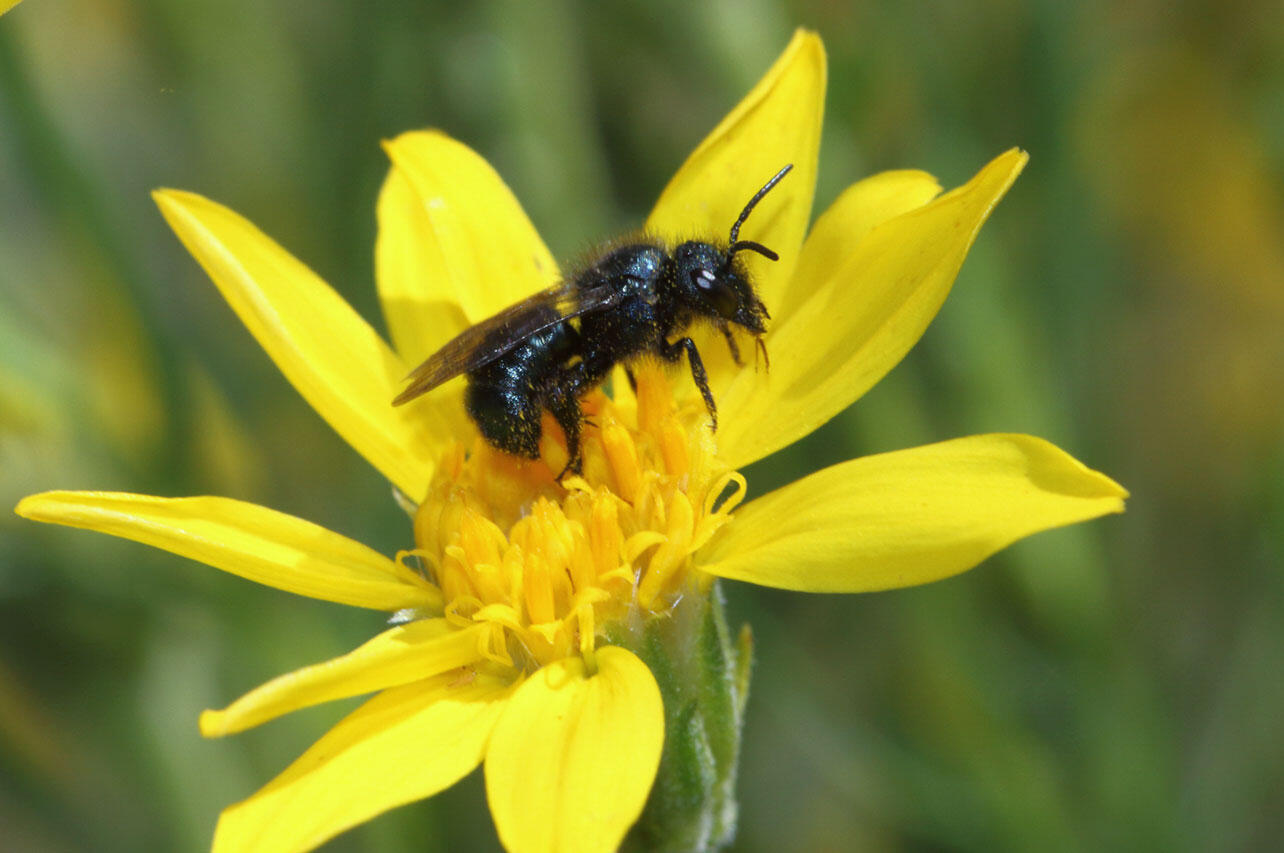
How to Build a Bee House
Tools
- Measuring tape
- Pencil
- Square
- Powered Drill(s)
- Chop saw OR miter box/saw
Materials
- 8’ L x 8” W x 1” T of cedar or another durable wood source
- 1 box (approximately 25 screws) of 1-5/8” length coated or stainless steel
- Various 6” L x roughly 4” wide aspen/cottonwood (or other soft wood) rounds
- An assortment of scrap wood cuts (2” x 4” or other)
- A ¼ “ drill bit long enough to fully drill 6” through above materials
- Optional: web-purchased nesting “reeds”; see Resources below for more information
Steps
- Cut 2 sides at 12” and bottom/top panels at 10”.
- Pre-drill and fasten your box together.
- Cut 2 boards at 8-¾ “ from the long edge of a 45-degree miter cut to the lower square edge (see video for visual).
- Join roof panels and use additional material to close off the backside of the house.
- Screw interior components and pack reeds into voids between components.
- Mount your bee house at a SE aspect to get morning sun.
- Sit back and enjoy the bee activity!
Resources
For more information on native bees or to purchase components (nesting reeds) or pre-built bee dwellings, visit:
Crown Bees at www.crownbees.com
Xerces Society (for all things pollinators) at www.xerces.org
Learn how you can do even more to help native bees by planting a Habitat Hero garden in this blog post and video.

